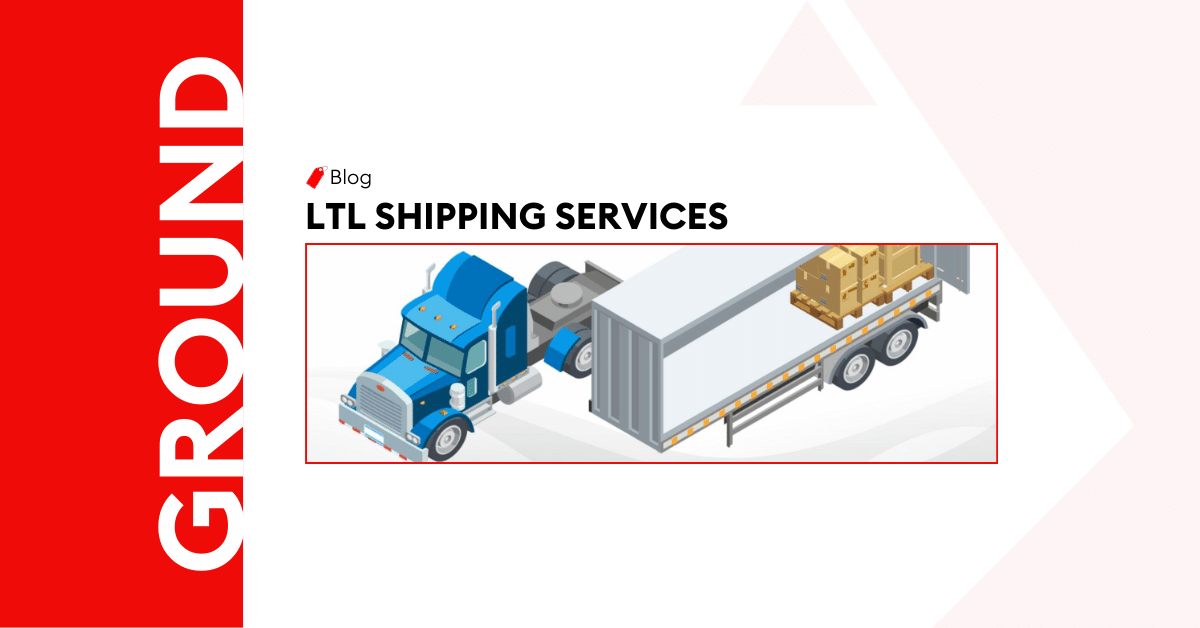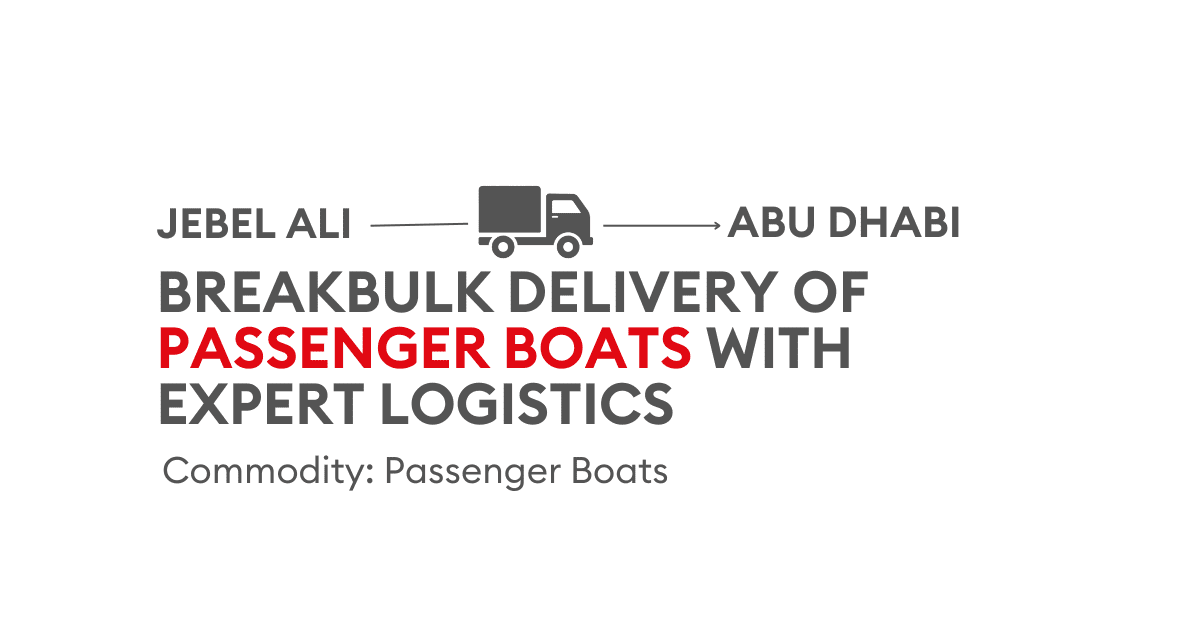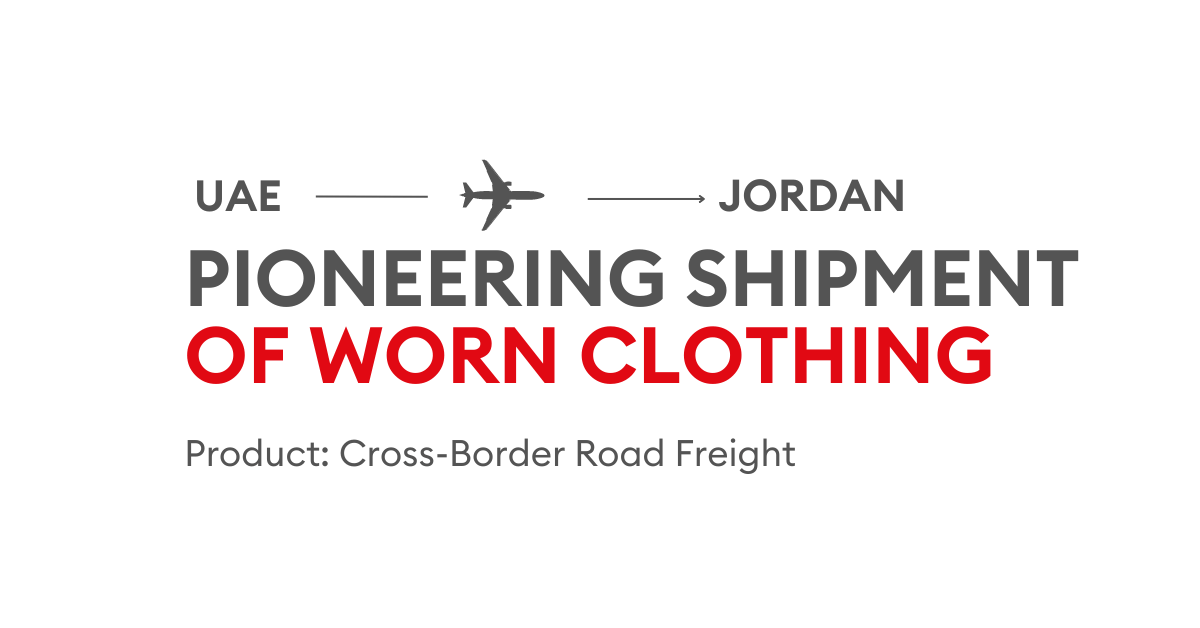
7 Ways to Overcome the Challenges of LTL Shipping Services
LTL shipping has been an effective road freight service. However, despite the achievements, some challenges have been commonly experienced by LTL shippers and carriers. These challenges span from capacity, delays, freight loss, damages, and visibility, to customer service. With each challenge taking its toll on LTL, it is best to understand them and design strategies to curb these challenges.
This post will analyze the challenges and provide solutions to each of them for a smoother LTL shipping experience.
Limited Space and Capacity Challenges
This is one of the consistent problems with LTL shipping. It means that there is little or no space to accommodate cargoes ready for transportation. One major cause of the capacity challenge is growing demand since it is a time when online shopping is dominant. Consumer activities including online shopping make large numbers of shippers want to transport goods quickly, which is sometimes more than the available truck capacity.
Other factors that cause capacity challenges include:
- Traffic Congestion and Delays: This happens when a truck is stuck in road traffic and can not meet up with the carrier’s schedule. The trucks are not back on time to transport other cargoes, hence creating a shortage.
- Driver Shortage: Experienced and efficient drivers are needed for LTL shipping. When there are limited numbers of drivers, only a few trucks are able to move.
- Equipment Availability: Aside from market forces, mechanical issues can make trucks become unavailable. This refers to the situations of faults and breakdowns. The inability of carriers to buy more trucks to meet their customer demand will also lead to equipment unavailability.
- Regulatory changes: The changes concerning driving hours will limit the availability of trucks as the transit time will increase.
Capacity challenges can translate into port congestion and disrupt the smooth flow of the supply chain. In all, delaying the shipments.
Solutions to Address Limited Spaces and Capacity
Capacity poses significant threats, but there are a few strategies to remedy the situation. The following are the applicable strategies.
Optimized Packaging System
Goods are packed in containers or pallets before being loaded onto the trucks. Containers and pallets should be of appropriate sizes to limit wasted space. These containers should be well-suited to the truck’s dimensions, which means less bulky containers or pallets are ideal for LTL shipments.
Proper Consolidation
It is advisable to seek carriers with a proper consolidation strategy. The ideal strategy involves combining cargo going to similar destinations or routes. This will save transit time, ensuring that the trucks deliver the shipments and return to the port on time to pick up the next ones.
Route Optimization and Visibility
Transport Management Software (TMS) is ideal for route optimization. With this technology, routes can be planned to prevent wasted spaces in trucks. Another aspect is employing technology that provides visibility down the route. This can help identify traffic situations and other factors that can cause delays. Solving these issues will make transportation faster and in turn make trucks available as scheduled.
Long-term Contracts
Long-term contracts provide an advantage. It bolsters shippers’ relationships with carriers, resulting in the assurance of capacity.
Freight Classification and Pricing Complexity Challenges
Freight classification involves grouping goods as per industry standards. This determines the pricing and how the goods will be handled. However, it is not as straightforward as it sounds as there are several defining factors that make this an intricate process and a challenge.
Here are the complexities.
Packaging Consideration
The way goods are packaged says a lot about the nature and handling requirements of the goods. Packages such as pallets, crates, and cartons are the common types and they influence classification decisions. These packages also influence the weight and density of the goods, which are needed for determining the pricing.
This becomes complex as every package material must be considered before factoring them into price determination.
Bill of Lading Accuracy
The bill of lading is a document that shows the shipment’s information such as dimensions, weight, class, and other descriptions. An accurate bill of lading should make classification easier; however, if the bill of lading is inaccurate, it could make the process more complex. When classification gets tougher, price determination also gets tougher.
Mixed Shipment
LTL is known for a wide range of mixed shipments as these belong to different shippers. As a result, classification and pricing become more difficult. The class of the shipments must be determined by separately analyzing each of them.
Solutions to Address Freight Classification and Pricing Complexity
There are useful tips that can help navigate freight classification systems and smoothen price negotiations. Therefore, here is the breakdown.
Efficient Communication Channels
Communication is key to understanding shipment details and price negotiations. Efficient communication channels will enable shippers and carriers to explain unclear features and terms. Both parties can easily ask questions and receive rapid answers to avoid the problem of misclassification and price discrepancies.
Technology
Technology has undoubtedly made things easier in LTL shipping. Freight classification software will analyze shipment details, resulting in automated classification. Once this is solved, price determination and negotiation become easier.
Proper Classification Understanding
There are standards of freight classification set by relevant bodies such as the National Motor Freight Classification (NMFC). All players in LTL must have a proper understanding of the standardized classification rules and relevant pricing modalities. This will eliminate bottlenecks and misconceptions during classification processes.
Accurate Product Description
The description of the products provided by shippers will affect classification and pricing. An accurate description of the goods makes the process less difficult. It should cover the dimensions, hazardous nature, weight, and other handling requirements of the goods.
Freight Loss and Damage Challenges
LTL shipping is not risk-free. The nature of this service creates the possibility of freight loss and damages. Here are a few triggers of freight loss and damage in LTL shipping:
- Transshipment: In LTL shipping, goods may be transferred from one truck to another. This leads to an increase in the handling of goods, which increases the potential for damage.
- Multiple Loading and Unloading: Goods of different shippers are consolidated into one truck. Each of these goods has its destination along a specified route, as a result, goods will be unloaded and loaded at different stops while in transit. This action can lead to loss and damage.
- Improper Packaging and Placement: Goods need to be packaged and protected in the truck. When there is no proper cushioning, straps, or braces to hold goods in place, they can fall or hit one another, resulting in loss and damage.
- Vehicle Failure: This involves the case of accidents that may lead to the loss of drivers and goods.
Solutions to Prevent Loss and Damage Challenges
Here are measures that can help mitigate the risk of loss and damage in LTL shipping:
Proper Packaging
Appropriate containers and packaging systems will be beneficial for goods. There should be good cushioning materials, braces, or straps to hold goods in place while in transit. This will prevent goods from falling or hitting other cargo.
Optimized Consolidation
Goods can be consolidated in a system that will reduce handling frequency. Carriers should consolidate goods with destinations along the same route. Goods that will be delivered at a farther destination should be placed deeper into the truck while those with closer destinations be placed where they can be unloaded without interfering with other goods. This will reduce multiple loading and unloading and in turn, reduce mishandling risks.
Employ Quality Carriers
The expertise and track record of carriers should be considered. It is best to use carriers known for efficiency and little or no records of mishandling.
Insurance Coverage
There are situations where the cause of loss and damage is beyond control. Obtaining insurance coverage is the ideal backup plan at this time. Insurance coverage that is relevant to less then truck load shipping should be considered.
Delivery Delays and Inconsistent Transit Times
Delivery delays pose significant problems, making cargo recipients unhappy and disrupting the supply chain flow. Delays and inconsistent transit times in LTL can be a result of the following factors:
Traffic and Road Conditions
Congestion of vehicles along the delivery route will cause a no-movement or slow-movement situation. Aside from naturally occurring traffic, road conditions such as road repairs, bad roads, bridge repairs or shutdowns, etc. can also disrupt transit time.
Too many stops
Since the truck contains goods from different shippers, it is bound to stop at different delivery locations. Each stop adds to transit time and too many stops will increase the time even further.
Mishandling/Damage
When mishandling occurs, it can lead to damage. Upon damage, the carrier will tend to seek a solution. This will disrupt movement and delay the delivery.
Capacity Constraint
Periods of high demand and shortage of equipment can limit the carrier’s capacity. They tend to prioritize shipments that may not favor some shippers. This will cause delays.
Weather Conditions
Weather conditions such as storms, hurricanes, and heavy rainfall will delay the movement of cargo. The carriers may choose to wait or reroute, which disrupts the transit time.
Solutions to Improve Delivery Efficiency
Optimize Routing
Route optimization with applicable technology such as Transportaion Management Software (TMS) will give an idea of the route conditions per time. As a result, carriers can beat the issue of traffic and unforeseen road conditions. It can also help plan the delivery of cargo through relevant routes.
Tracking and visibility
Real-time visibility of shipment will help monitor the conditions while in transit. This will trigger proactive measures to eliminate bottlenecks or occurrences that can cause delays. Tracking technology such as GPS and RFID will be useful.
Improved Communication
Shippers, carriers, and cargo recipients must be in sync via communication. Good communication lines will enable each player to know the state of the goods, possible hiccups while in transit, and changes in transport plans. This will aid better decision-making and ease the tension among other players involved in LTL.
Contingency plan
A Plan B is always advised. There should be alternatives in case the problems can not be speedily remedied. This can include backup routes and carriers.
Employ Reliable Carriers
It is out of place for the reputation and records of carriers to be less considered. This speaks about the carrier’s efficiency. It is ideal to use an efficient carrier with a good contingency plan.
Freight Visibility and Tracking Challenges
It is not impressive that several players in this industry downplay the importance of freight visibility. Freight visibility is fast becoming a must-have feature for a smooth freight transport experience. Lack of visibility in LTL keeps shippers and carriers in the dark and prevents proactive measures to curb problems while in transit. Lack of freight visibility can cause the loss of goods, and overall disruption of transit time.
Solutions to Enhance Freight Visibility and Tracking
Freight visibility can be enhanced by employing technology to provide real-time data on shipment. These technologies include
- Global Positioning System (GPS): Carriers can use GPS trackers to transmit real-time data on location, vehicle condition, and road network situations.
- Transport Management Systems (TMS): This will provide a platform to track carriers, and manage shipments. It will help with route optimization, carrier selection, and overall data reporting or analytics.
- Electronic Data Interchange (EDI): EDI enables the exchange of data between shippers and carriers. It facilitates accurate real-time tracking of shipments.
Freight Handling and Special Requirements Challenges
Handling goods is never an easy feat as it goes a long way in determining their safety and integrity. There are goods with special handling requirements, which makes the process more difficult. Here are the special cases:
Temperature-Sensitive Goods
There are goods that need carriers to comply with strict temperature requirements. These goods include pharmaceuticals, chemicals, food items, etc. Keeping the temperature intact is challenging in LTL shipping since it involves several stops and transfers. This will increase the potential for temperature fluctuations.
Fragile Goods
Fragile goods need extra attention as they must be protected against vibration and impact. Ensuring that they are secured while in transit is challenging, as the shippers have to go the extra mile to ensure their safety.
Hazardous Goods
According to safety standards, only trained carriers are allowed to handle hazardous goods. Shipping these goods via LTL is challenging as there is a need for full concentration and attention all through the journey.
Time-Sensitive Goods
This kind of goods cannot cope with any form of delay. Carriers are obliged to pick up and deliver the goods within the required time frame, which is challenging.
Solutions for Handling Special Requirements
Proper Communication
Shippers should properly communicate with carriers providing all information about the goods. Special handling information should also be communicated to the carriers. This will enable the carrier to evaluate the cargo needs and put the necessary measures in place.
Discuss Special Handling Services with Carrier
Shippers should present their special shipment needs and coordinate with the carrier to outline the best service that meets these needs. This can lead to more customized service for a particular shipper, preventing any handling issues.
Coordinate with Carrier to Ensure Proper Handling
It all starts with the shipper understanding what is best for different situations.
- For Fragile Goods: Shippers should coordinate to ensure that goods are well-padded, cushioned, and protected.
- For Temperature-Sensitive Goods: Carriers must use a temperature control transportation system.
- Time-Sensitive Goods: Coordinate with carrier and agree on expedited services to meet the time frame.
Customer Service and Communication Challenge
Customer service and communication are very important in LTL shipping. This is a direct relationship between shippers and customers. When there is a shutdown of this communication channel, it makes customers unhappy and unsure about the shipper’s services.
Customer service issues can lead to the following:
- Little or no transparency and visibility of operations.
- Chaotic problem resolution for cases like billing discrepancies, loss, and damages, and shipment delays.
- Dwindling competitive advantage over competitors.
Solutions for Improved Customer Service and Communication
Customer service and communication can be improved in the following ways.
- Clear communication channels: There should be dedicated channels for communication with customers. This could be via emails, social media platforms, toll-free numbers, etc. These channels should be defined and active.
- Proactive updates: This involves informing customers on matters arising as soon as possible. This will involve updates on delays, capacity, changes in the shipment process, etc.
- Automated shipment notification: This will notify customers every step of the way. It can be through emails or SMS.
- Real-time shipment tracking: This will give customers real-time updates on the state and location of their goods. It can be through mobile apps or a web portal.
- Responsive customer support: This gives the customer access to lay complaints, and make an inquiry on shipments. A quick response will do a lot of good.
How Al Sharqi Can Help
Al Sharqi has quality experience in LTL shipping and the overall logistics space. We at Al Sharqi are aware of the LTL shipping challenges and have devised efficient strategies to solve them.
- Al Sharqi will optimize packaging systems to maximize capacity and prevent loss and damage.
- Al Sharqi employs up-to-date technology for route optimization, tracking and visibility, and overall transport management.
- Al Sharqi understands the complexities and can help facilitate the proper handling of different classes and natures of goods.
- We will help minimize shipping bottlenecks to remedy delays and inconsistent transit times.
- We will help establish a responsive communication line with customers to bolster customer service.
Conclusion
This post has outlined the challenges facing LTL shipping services, ranging from capacity shortages to customer service. The positive is that for each problem there is a solution. Hence, shippers and carriers should employ these solutions to improve less than truckload shipping services and give customers the best satisfaction.
Frequently Asked Questions
LTL stands for Less Than Truckload, which is a shipping method used for transporting small freight that doesn’t require a full truck. It differs from other shipping methods like FTL (Full Truckload) because LTL shipments are combined with other shipments from different companies to maximize truck capacity and reduce costs, making it a more cost-effective option for smaller loads.
Shipments suitable for LTL shipping have the following characteristics:
- They are larger than parcels but smaller than a truckload. The weight range is between 150- 20,000 pounds.
- The shipment is not strictly time-sensitive as there are several stops with LTL.
The following factors will help pick an ideal carrier:
- The carrier’s reputation, which shows its track records, reliability, and achievements.
- The carrier’s service area must be in line with that of the shipper.
- Competitive and favorable rates.
- The carrier’s equipment, as this will show a proposed level of efficiency and capacity.
- Special handling services, if any.
- The responsiveness of the carrier’s customer service.
Some of the strategies to manage the freight costs in LTL shipping includes:
- Optimize the packaging, as this will reduce charges based on weights and dimensions.
- Long-term relationships with carriers that can land favorable deals and cost.
- Accurate freight classification that will lead to proper price determination and avoid the need for reclassification charges.
Our customer service team is happy to assist you with planing your next booking.

Related Articles
Seamless Passenger Boat Delivery from Jebel Ali to Abu Dhabi | A Case Study
Precision Handling for High-Value Cargo Summary Handling oversized and high-value cargo, such as pas
Defense Solution by Al Sharqi Ground Transportation | A Case Study
Driving Excellence Across Borders Summary Al Sharqi Ground Transport was tasked to deliver 45 movabl
Navigating the Saif Zone to Jordan Logistics Corridor | A Case Study
From UAE to Jordan on the Road of Innovation Summary This case study explores the logistical challen







Post a comment
You must be logged in to post a comment.